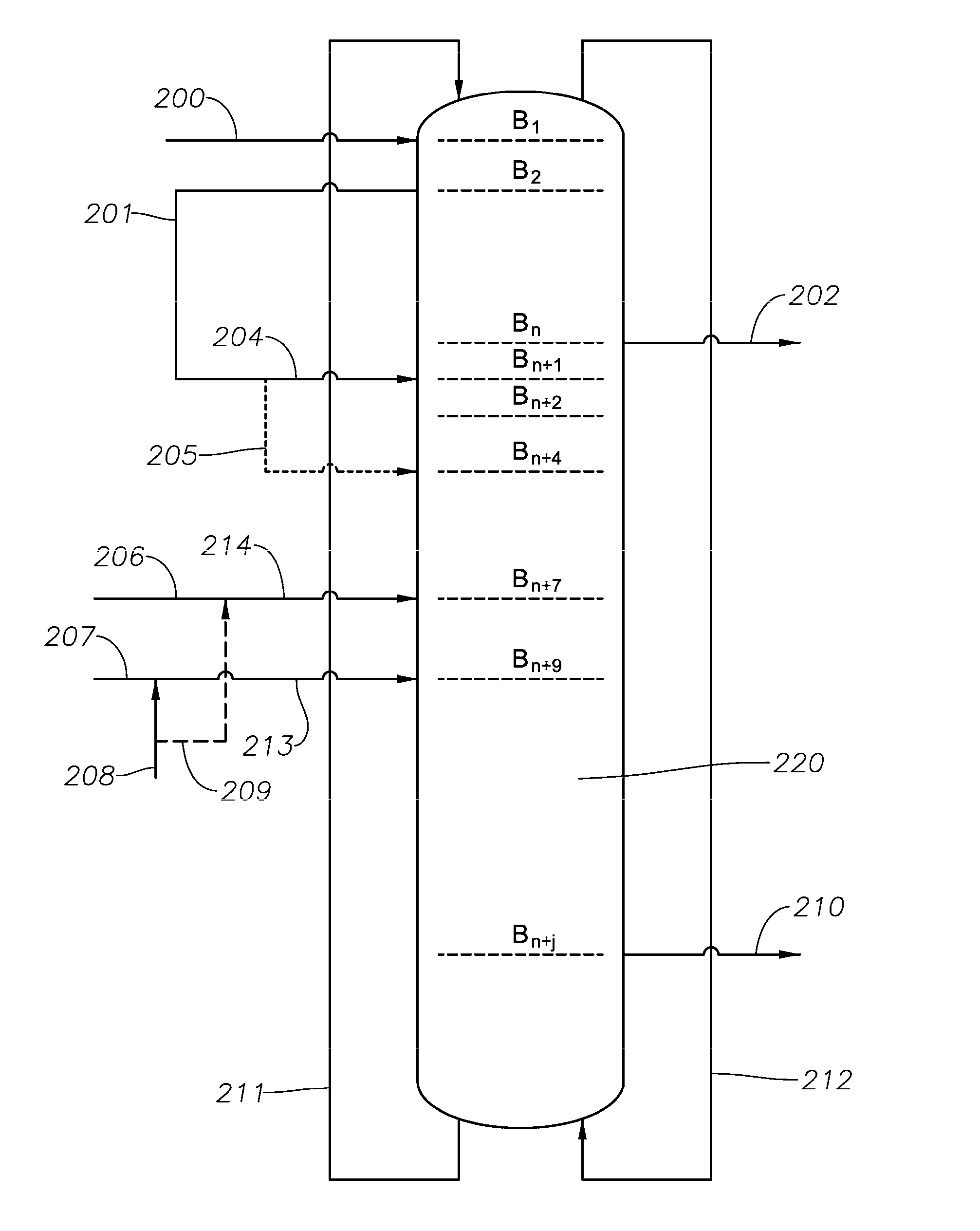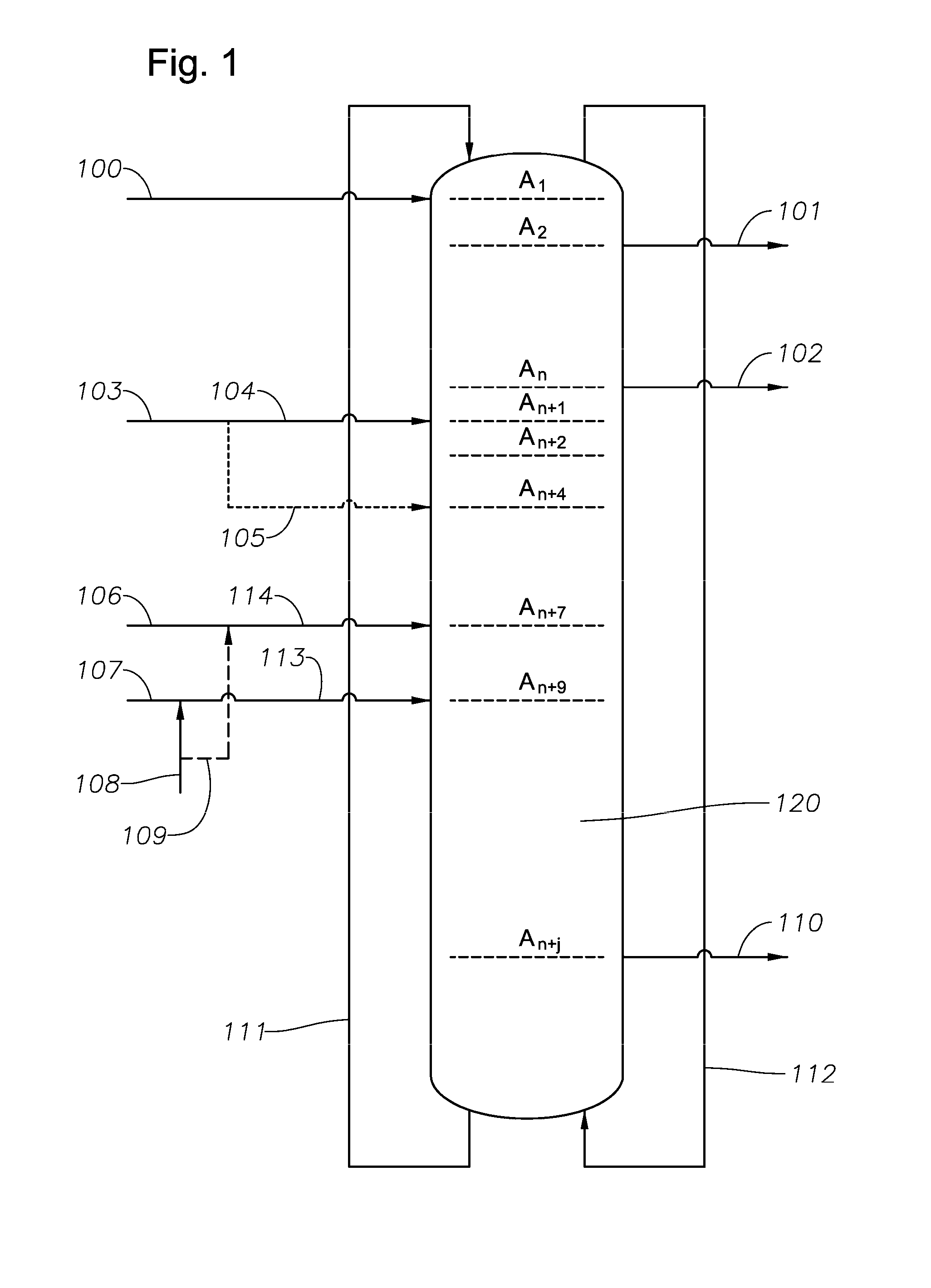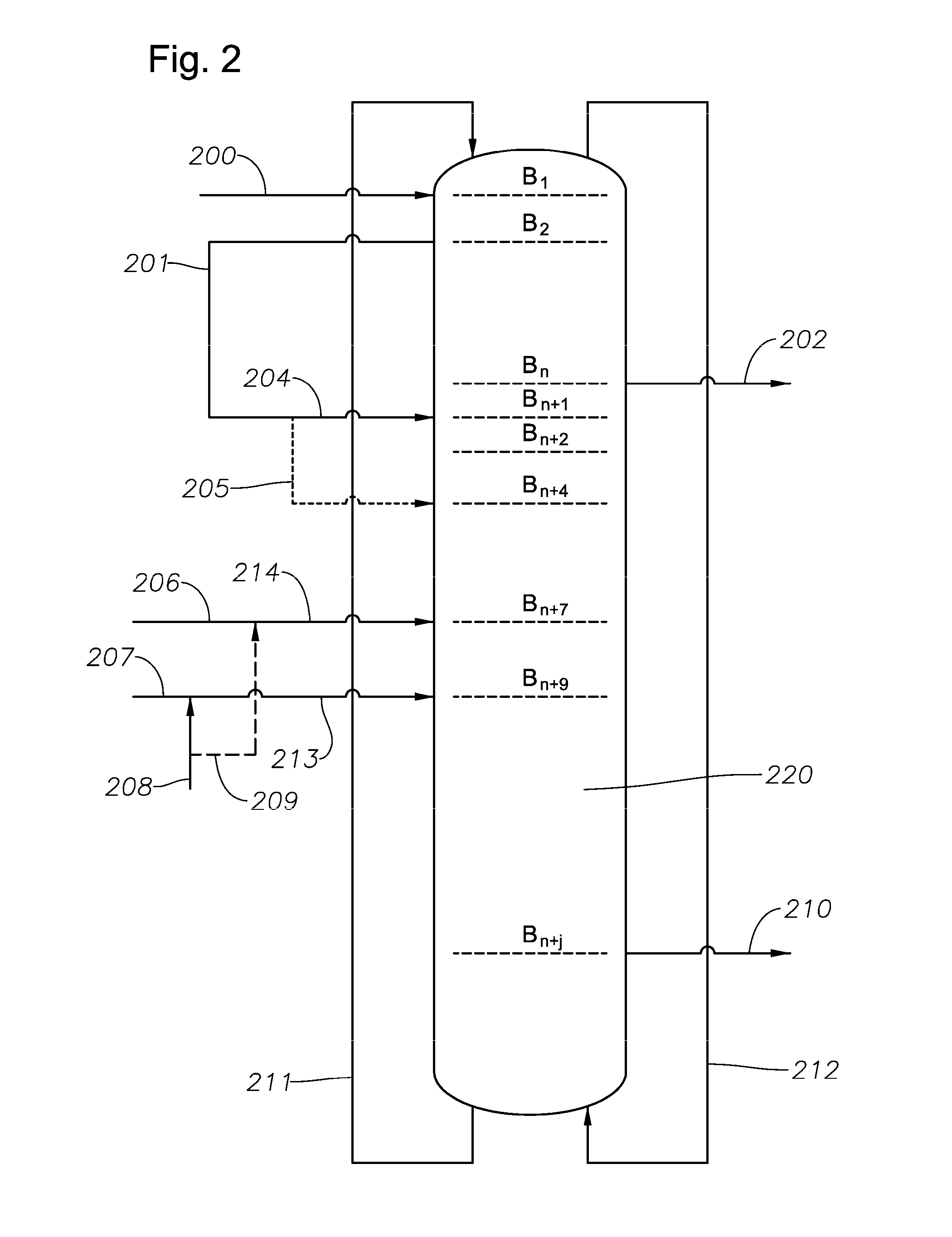Separation system
a separation system and separation method technology, applied in the direction of separation processes, physical/chemical process catalysts, bulk chemical production, etc., can solve the problems of high energy expenditure, difficult movement of solids through the adsorption apparatus or system, and difficult separation of components by distillation. , to achieve the effect of reducing the requirements of pumping and distillation, increasing the efficiency of adsorption apparatus or system, and reducing contamination
- Summary
- Abstract
- Description
- Claims
- Application Information
AI Technical Summary
Benefits of technology
Problems solved by technology
Method used
Image
Examples
Embodiment Construction
[0045]According to the invention, there is provided a process for separating a product from at least two multicomponent feeds to an adsorption apparatus or system. In an embodiment there is a simulated moving bed adsorptive separation system plumbed so that the first or primary flush output is connected to the secondary flush input directly, whereby the primary flush output, comprising desorbent and having a higher concentration of the desired compound as compared to the flush material prior to being used as primary flush, is then utilized as secondary flush input, resulting, in more preferred embodiments, in the secondary flush output comprising desorbent and having even higher concentration of the desired compound than in the primary flush input.
[0046]The apparatus or system may comprise a moving-bed or a simulated moving-bed adsorption means, and in embodiments provides a product comprising at least one organic compound, such as an aryl compound with alkyl substitutes, for instan...
PUM
| Property | Measurement | Unit |
|---|---|---|
| wt % | aaaaa | aaaaa |
| step time | aaaaa | aaaaa |
| purity | aaaaa | aaaaa |
Abstract
Description
Claims
Application Information
 Login to View More
Login to View More - R&D
- Intellectual Property
- Life Sciences
- Materials
- Tech Scout
- Unparalleled Data Quality
- Higher Quality Content
- 60% Fewer Hallucinations
Browse by: Latest US Patents, China's latest patents, Technical Efficacy Thesaurus, Application Domain, Technology Topic, Popular Technical Reports.
© 2025 PatSnap. All rights reserved.Legal|Privacy policy|Modern Slavery Act Transparency Statement|Sitemap|About US| Contact US: help@patsnap.com



